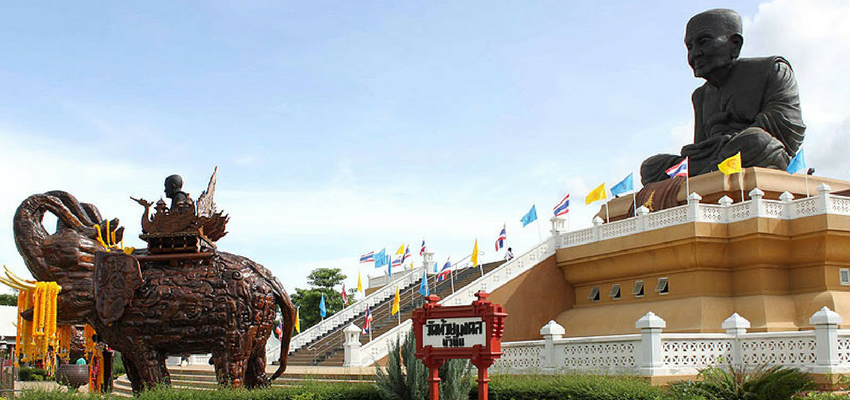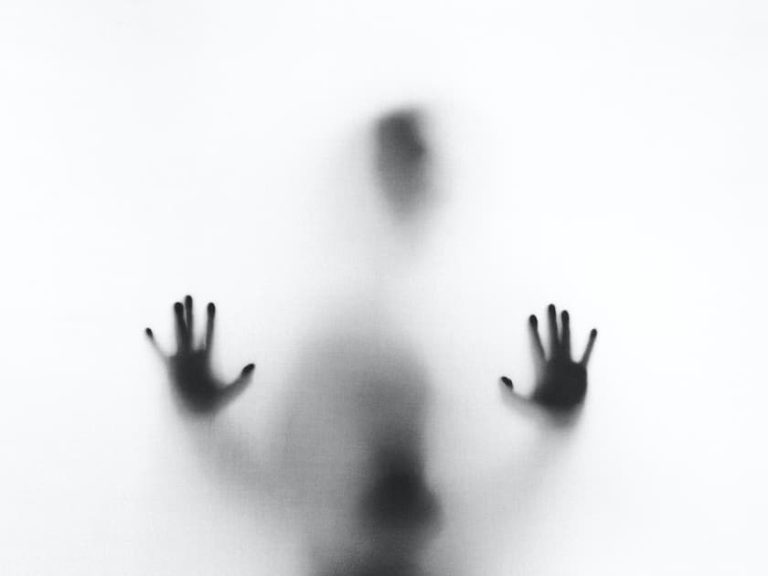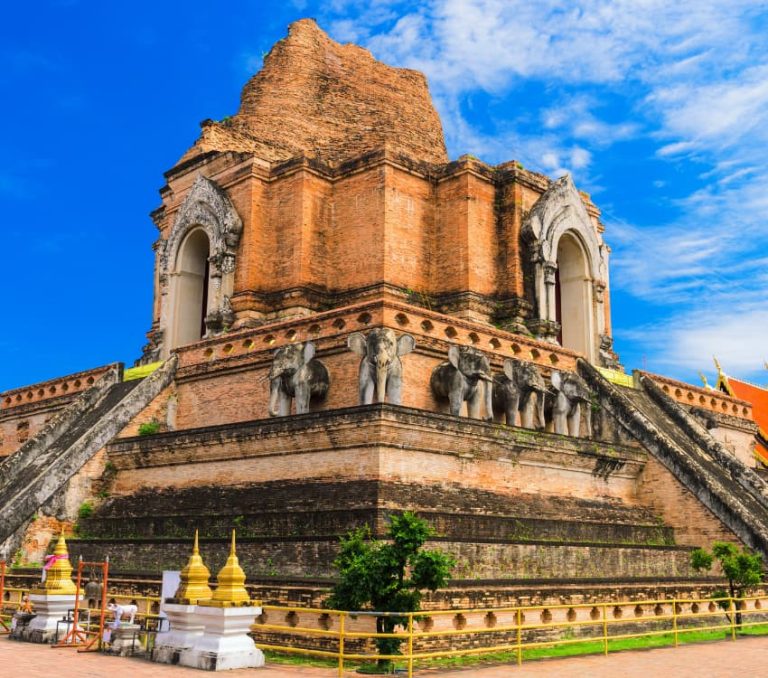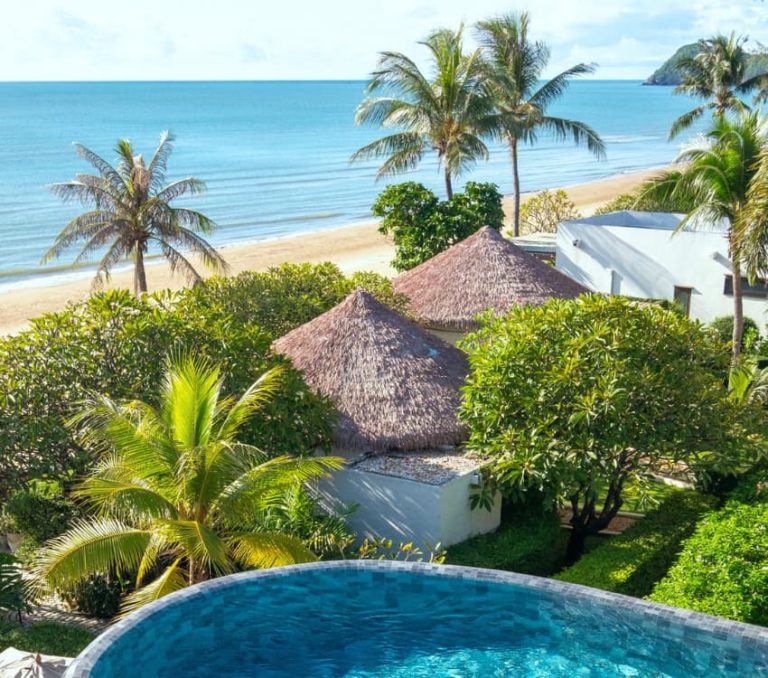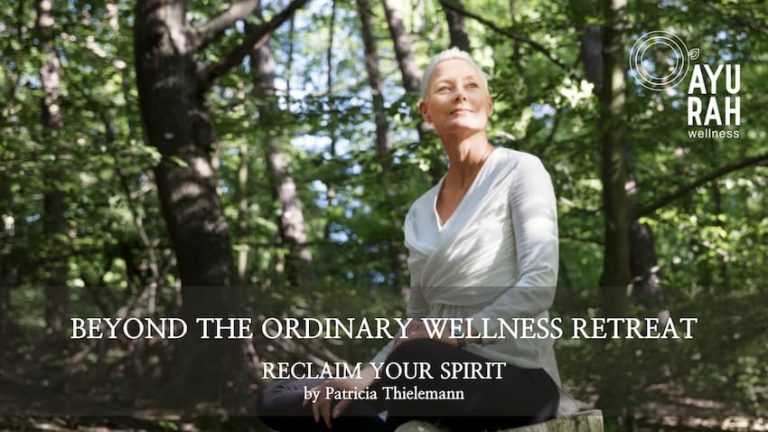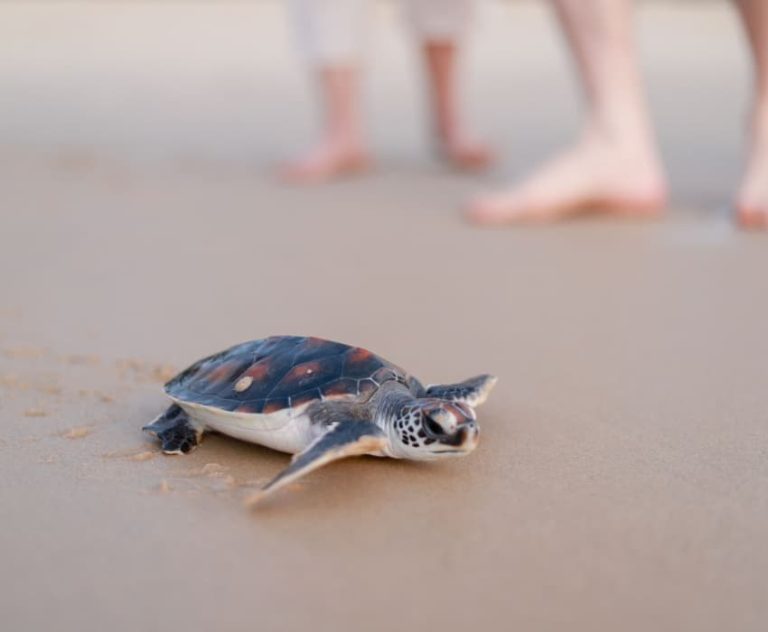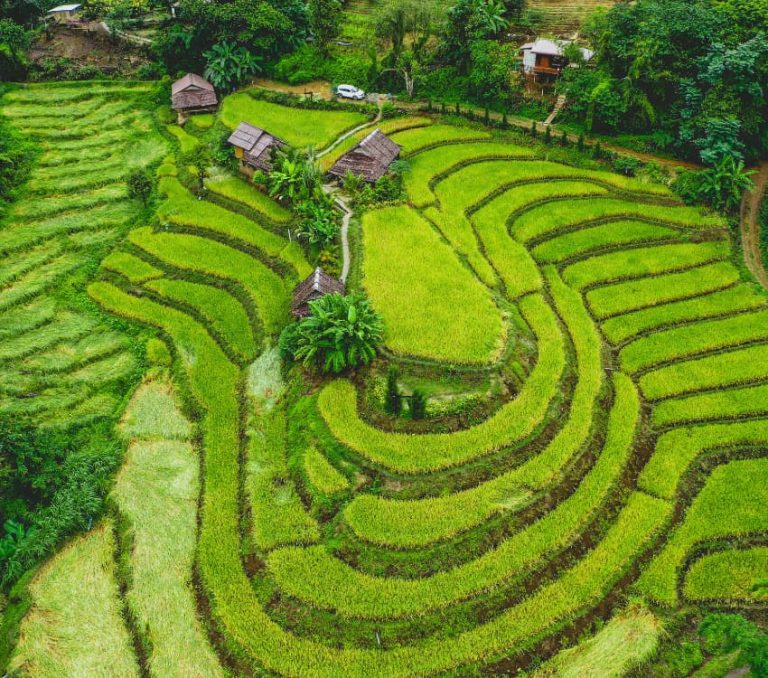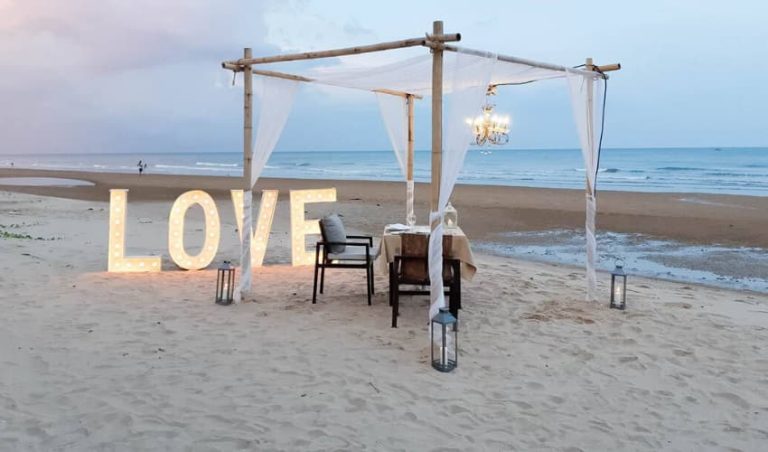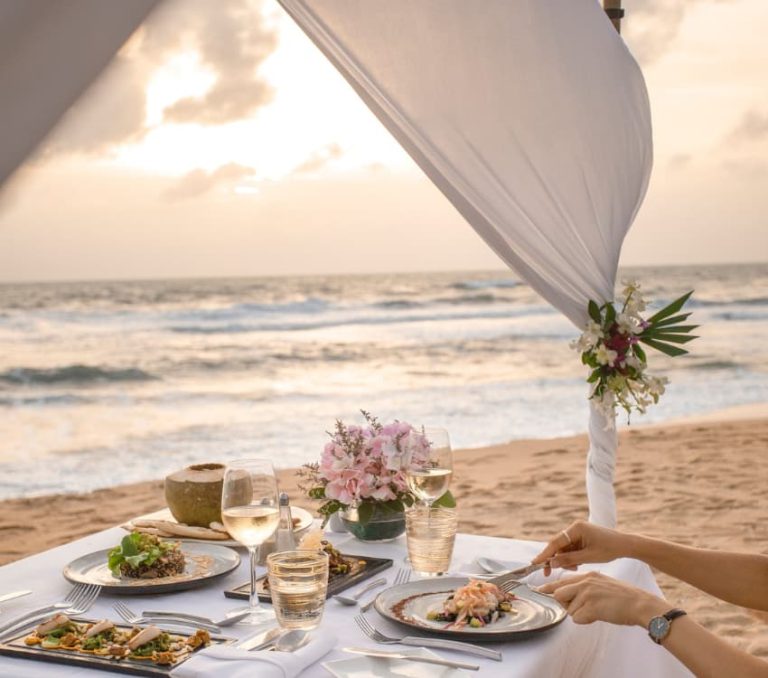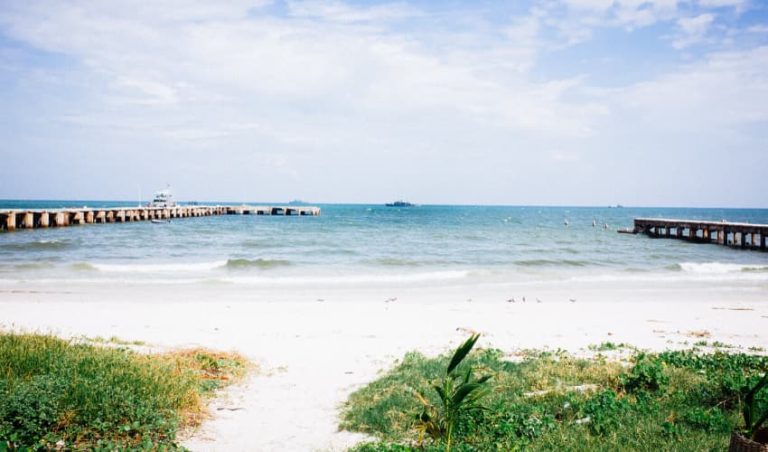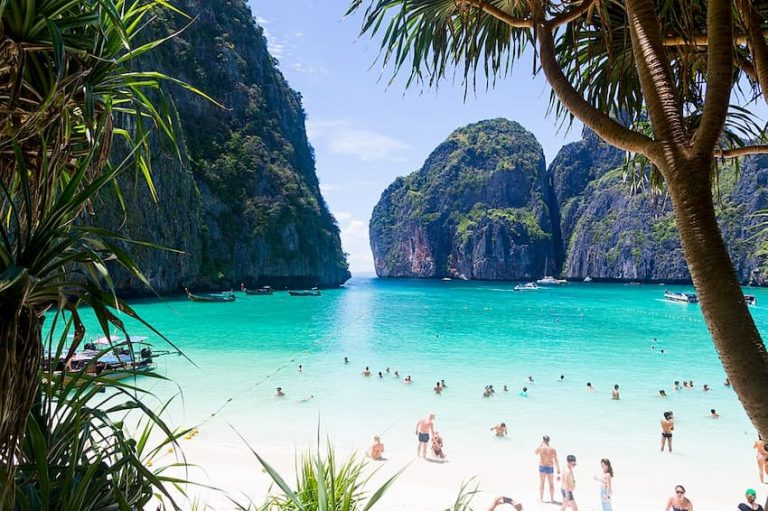Hua Hin, a charming coastal resort town in Thailand, is renowned for its stunning beaches, vibrant markets, and rich cultural heritage. Located just a few hours from Bangkok, Hua Hin has long been a favourite getaway for locals and international travellers. Originally a quiet fishing village, the town gained prominence when the Thai royal family chose it as the site for their summer palace in the early 20th century. Today, Hua Hin seamlessly blends its historical roots with modern attractions, making it a must-visit destination for those seeking a mix of relaxation and cultural exploration.
Its temples are central to Thailand’s cultural landscape, and they serve as spiritual centres and gathering places for community gatherings. In a country where approximately 95% of the population practices Buddhism, temples, or “wats,” are found in nearly every town and city. These temples are more than just places of worship; they are living museums of art, history, and tradition, reflecting the deep spiritual beliefs that shape Thai life. For both locals and visitors, these sacred sites offer a glimpse into the spiritual practices that have been integral to Thai culture for centuries.
We invite you to explore seven of Hua Hin’s most beloved temples, each with unique charm and significance. Whether you are drawn to the tranquil beauty of these sacred spaces, their historical importance, or simply the opportunity to experience something deeply rooted in Thai culture, these temples offer a rich and rewarding experience.
Wat Hua Hin (Wat Ampharam)
Wat Hua Hin, also known as Wat Ampharam, is a significant spiritual landmark in the heart of Hua Hin. Its central location makes it easily accessible for locals and visitors in town, making it a convenient stop for anyone exploring the area. As the most important temple in Hua Hin, Wat Hua Hin serves not just as a tourist attraction but as a vibrant place of worship that plays a central role in the daily lives of the local community.
What sets Wat Hua Hin apart is its intricate and elaborate design. The temple’s architecture and interior decorations are a feast for the eyes, with beautiful murals that vividly depict scenes from Buddha’s life. Rich in detail and colour, these murals offer visitors a deeper understanding of Buddhist teachings and Thai cultural heritage. The temple is also adorned with golden statues of Buddha, which add to its serene and sacred atmosphere.
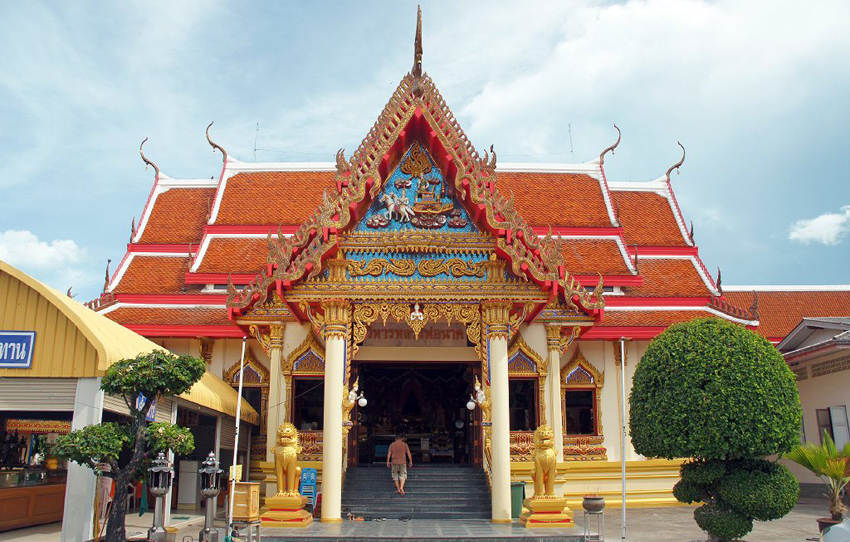
For visitors seeking a more immersive experience, Wat Hua Hin offers afternoon meditation sessions. These sessions provide a peaceful retreat from the hustle and bustle of town, allowing visitors to connect with the spiritual essence of the temple. Whether you’re a seasoned meditator or a curious beginner, these sessions offer a unique opportunity to experience mindfulness and tranquillity in an exceptional setting.
Wat Bor Fai
Wat Bor Fai is a charming and culturally rich temple located approximately 5 kilometres north of Hua Hin, along the Khao Takiab-Hua Hin Road. This peaceful retreat offers visitors an authentic glimpse into Thai spiritual practices while being easily accessible from the town centre. The short drive makes it an ideal destination for those looking to explore beyond the more tourist-heavy areas of Hua Hin.
One of Wat Bor Fai’s most distinctive features is its sacred catfish ponds. These ponds are home to a large population of catfish, considered sacred and integral to the temple’s unique appeal. Visitors are often fascinated by the sight of these abundant and revered fish. The ponds add a tranquil and reflective atmosphere to the temple grounds, making it a soothing place to visit.
A visit to Wat Bor Fai offers more than just a chance to see these sacred fish; it also provides an opportunity to participate in the tradition of feeding them. For a small donation to the temple, visitors can purchase fish food and partake in this merit-making act, a common practice in Thai Buddhism. Feeding the catfish is believed to bring good karma and is a meaningful way for visitors to engage with local customs. This simple yet profound activity enhances the cultural experience, allowing visitors to connect with the community’s spiritual life in a tangible and rewarding way.
With its serene environment and unique traditions, Wat Bor Fai offers a peaceful escape from the busier parts of Hua Hin. It provides a quiet space for reflection and a chance to participate in a meaningful cultural practice, making it a memorable stop for those exploring the region’s spiritual and cultural landscapes.
Wat Huay Mongkol
Wat Huay Mongkol is one of the most revered and popular pilgrimage sites in the Hua Hin region, located about 10 kilometres west of the town. This temple attracts thousands of visitors each week, drawn by its spiritual significance and the serene beauty of its surroundings. The short drive from Hua Hin makes it an accessible destination for tourists and locals seeking to connect with Thailand’s rich religious heritage.
The centrepiece of Wat Huay Mongkol is the awe-inspiring statue of Luang Phor Tuad, a revered Thai monk known for his miraculous powers and benevolence. This statue is the largest Buddha image in Thailand, standing 12 meters (39.4 feet) tall and dominating the landscape. The statue depicts Luang Phor Tuad in a seated meditation posture, exuding a sense of calm and spiritual strength. Flanked by two wooden elephants, the statue is a visual marvel and a symbol of faith and protection, attracting pilgrims who come to pay their respects and seek blessings.
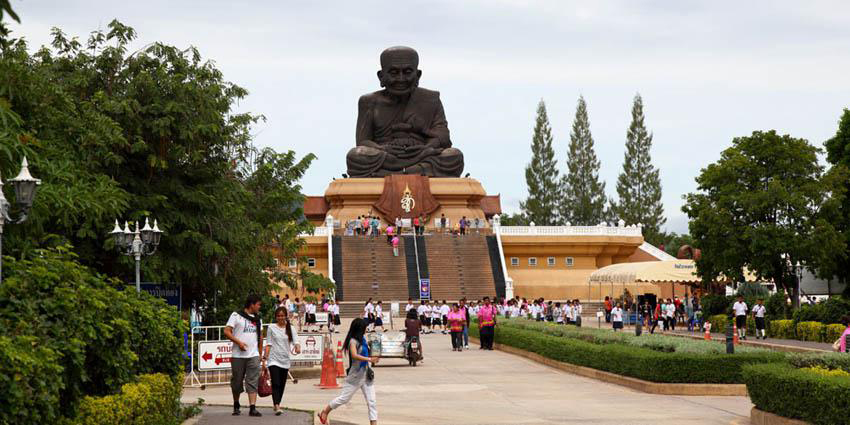
The cultural significance of Luang Phor Tuad and his statue is deeply rooted in Thai Buddhism. Luang Phor Tuad is believed to have performed many miracles during his lifetime, and his image is thought to bring protection and good fortune to those who revere him. For this reason, Wat Huay Mongkol is more than just a temple; it is a place where faith is vividly alive, and visitors can witness the deep devotion of the Thai people.
To make the most of your visit, going on a weekday when the temple is less crowded is advisable. The weekends see an influx of pilgrims, which can make the experience more hectic. Visiting during quieter times allows you to appreciate the tranquil, park-like setting surrounding the temple. The grounds of Wat Huay Mongkol are beautifully landscaped, with streams, waterfalls, pavilions, and shaded areas that invite relaxation and reflection. These serene surroundings perfectly counter the temple’s spiritual energy, offering visitors a place to unwind and connect with nature.
Wat Huay Mongkol is a must-visit for anyone interested in experiencing the spiritual heart of Hua Hin. Whether you are drawn by the towering statue of Luang Phor Tuad, the peaceful environment, or the opportunity to engage with Thai religious traditions, this temple offers a memorable and enriching experience.
Wat Khao Krai Lart
Wat Khao Krai Lart is a tranquil and secluded temple on a mountaintop just 6.3 kilometres from Hua Hin. Its elevated location offers breathtaking panoramic views of the surrounding landscape and provides a serene escape from the busier, more tourist-centric areas of the town. The temple’s peaceful atmosphere makes it an ideal destination for those looking to experience a more reflective and meditative side of Hua Hin’s spiritual life.
Often considered an underrated gem, Wat Khao Krai Lart stands out for its relative seclusion. Unlike the more famous temples that attract large crowds, this temple remains a quiet haven, perfect for visitors seeking solitude and reflection. The journey to the temple, which involves a mountainous climb, adds to its appeal as a destination for those who appreciate natural beauty and spiritual tranquillity. The fewer crowds allow visitors to explore the temple and its surroundings leisurely, making it a more personal and meaningful experience.
One of Wat Khao Krai Lart’s charming features is its serene fish ponds, which add to the temple’s peaceful ambience. These ponds are home to various fish, and visitors are encouraged to participate in the traditional merit-making practice of feeding them. You can purchase fish food for a small donation and engage in this simple yet spiritually rewarding activity. Feeding the fish is believed to bring good karma and is a delightful way to connect with the temple’s local customs and natural environment.
The combination of stunning views, quiet surroundings, and the opportunity to partake in local traditions makes Wat Khao Krai Lart a special place for visitors. Whether you’re seeking spiritual solace, breathtaking scenery, or a deeper connection with Thai culture, this temple offers a unique and fulfilling experience away from the hustle and bustle of Hua Hin’s more popular attractions.
Wat Khao Sanam Chai
Wat Khao Sanam Chai is a visually stunning temple located about a mile south of the intersection of Soi 112, perched gracefully on a high ridge. This elevated position provides visitors with sweeping views of the surrounding landscape and creates a sense of serene isolation, making it a perfect spot for reflection and spiritual contemplation.
The temple’s architecture is one of its most captivating features. Wat Khao Sanam Chai is distinguished by its striking white buildings, elegantly trimmed with gold, which sparkle under the Thai sun. The clean, bright lines of the structures stand in beautiful contrast to the lush greenery of the ridge and the deep blue sky above. The numerous flags and bells that adorn the grounds add to the temple’s aesthetic appeal. The colourful flags fluttering in the breeze and the gentle chime of the bells enhance the temple’s peaceful atmosphere, making it a truly enchanting place to visit.
Visiting at sunset is highly recommended for those looking to experience Wat Khao Sanam Chai at its most magical. As the sun dips below the horizon, the entire area is bathed in a warm, golden light accentuating the temple’s already stunning architecture. The panoramic views from the ridge become even more breathtaking as the sky transitions through shades of pink, orange, and purple, offering a tranquil and almost otherworldly ambience. This time of day is perfect for those who wish to enjoy the temple’s beauty in a serene and meditative setting, free from the busyness of daytime visitors.
Whether you admire temple architecture, lover of scenic views, or seek a quiet place for evening reflection, Wat Khao Sanam Chai offers a truly memorable experience.
Wat Khao Takiap
Wat Khao Takiap is a prominent temple perched atop Khao Takiap Hill. It offers both spiritual enrichment and panoramic views of Hua Hin’s coastline. Located just a short distance from the town centre, this temple is easily accessible by climbing the steps up the hill or taking a tuk-tuk for a more leisurely ascent. The journey is part of the experience, with anticipation building as you approach this revered site.
One of the attractions of Wat Khao Takiap is the towering standing Buddha statue that greets visitors at the base of the hill. Standing tall against the sky, this impressive figure is one of the largest Buddha statues in the region and a symbol of peace and protection. As you explore the temple grounds, you’ll also encounter rows of bronze bells, which visitors are encouraged to ring for good fortune. The rhythmic sound of the bells, combined with the serene environment, adds a unique auditory dimension to the spiritual experience at the temple.
Adding to the temple’s charm are the mischievous monkeys that have made Wat Khao Takiap their home. These playful creatures are a visitor’s favourite, often roaming the temple grounds and interacting with tourists. At the same time, they add a touch of liveliness to the sacred site; keeping a close eye on your belongings is wise, as these monkeys are known for their curiosity and quick hands.
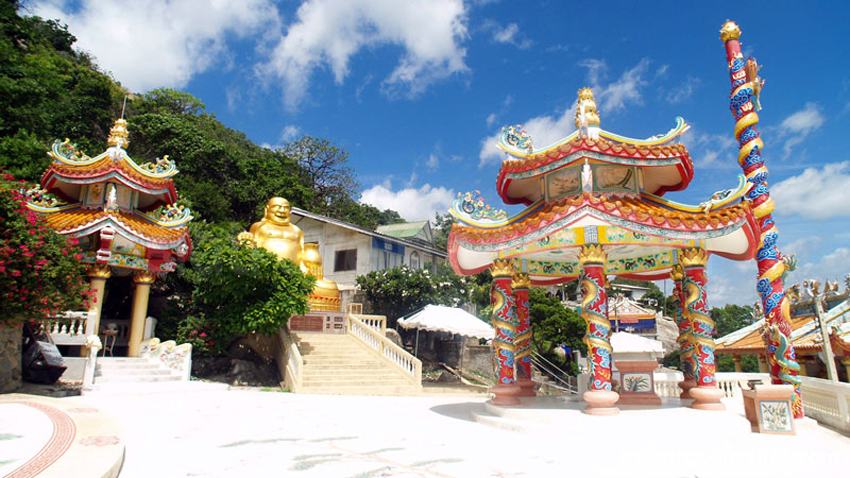
Wat Khao Takiap holds significant cultural importance in local Buddhist practices. The temple is a place of worship and reflection for many Buddhists in the area, who come to pay their respects and seek blessings. For visitors, Wat Khao Takiap offers a harmonious blend of culture and nature, where the spiritual and the natural worlds converge beautifully. The temple’s location on the hill provides a tranquil retreat, with stunning views of the surrounding area and the sea, making it a perfect spot for contemplation and connection with both the divine and the natural beauty of Hua Hin.
Whether you’re drawn by the temple’s cultural richness, breathtaking views, or the monkeys’ playful presence, Wat Khao Takiap offers a diverse and enriching experience. It’s a place where the traditions of Buddhism and the natural splendour of Hua Hin come together, offering visitors a chance to immerse themselves in the region’s unique spiritual and cultural tapestry.
Temple Etiquette in Thailand
Visiting temples in Thailand is a deeply enriching experience, offering insight into the country’s spiritual and cultural heritage. However, it’s essential to approach these sacred spaces with respect and understanding of the local customs. Observing proper temple etiquette not only shows reverence for the religious significance of these sites but also ensures a positive experience for all visitors.
-
Respectful Behavior
Dressing modestly is an aspect of showing respect when visiting a temple in Thailand. Both men and women should ensure their shoulders and knees are covered. Men are advised to wear long trousers and shirts with sleeves, while women should avoid wearing short skirts, shorts, or revealing tops. Scarves or shawls can be used to cover shoulders if needed, and many temples provide wraps for visitors who are not appropriately dressed. Dressing conservatively is a sign of respect for the sacred nature of the temple and its grounds.
Another important aspect of temple etiquette is the removal of shoes before entering any indoor sacred spaces, such as the ordination hall or the viharn (assembly hall). This practice signifies respect and humility and helps keep the temple clean. Visitors often see rows of shoes neatly placed outside the entrance, and it’s customary to follow suit. Additionally, when sitting or kneeling inside a temple, avoid pointing your feet directly at Buddha images, monks, or other people, as feet are considered the lowest and dirtiest part of the body in Thai culture.
-
Interaction with Monks
Interacting with monks, highly revered in Thai society, requires particular care and respect. It’s important to remember that monks dedicate their lives to spiritual practice, and strict rules govern their interactions with the lay public. For instance, women should be aware that they are not permitted direct physical contact with monks. This means that women should avoid handing anything directly to a monk. If a woman needs to give something to a monk, she should place it on a nearby surface, allowing the monk to pick it up without direct contact. Similarly, if a woman receives something from a monk, the monk will place the item down for her to pick up.
It’s also considered respectful for both men and women to lower themselves when passing by a monk, as standing taller than a monk is considered disrespectful. When speaking with a monk, maintain a polite tone and posture, and be mindful of your behaviour to reflect the solemnity of the setting.
Related Articles
- 10 Things to Explore in Hua Hin
- Fun Things for Kids in Hua Hin
- Your Hua Hin Travel Guide
- Hidden Gems in Pak Nam Pran
- Seven Unique Experiences in Pranburi
Aleenta Hua Hin
Pranburi Resort & Spa
Pranburi Resort & Spa

